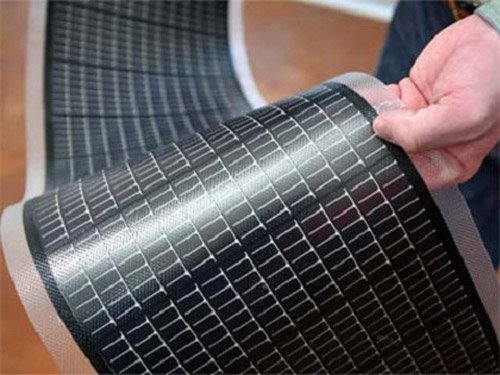
The advancements being made in the field of solar power have been nothing less than amazing in the past decade. New technologies have been coming online that is driving the price down of solar power and large energy companies are beginning to diversify in a major way and begin to dedicate large portions of their budget to transference and dependence on a significant percentage of solar power as it relates to their power generation distributions.
Some of the biggest proponents of solar power argue that there simply isn't enough landmass to accommodate these solar projects and that it's not an efficient use of space.
The same people making these points also are quite often found lobbying for traditional energy sources such as nuclear and fossil fuel.
The thing is that there are lots of potential sites for solar power plants if you can open your mind a bit and be more creative about where to put them.
To further prove my point, just look at the new solar power plant that is about to come online just outside Annapolis, U.S.A.
It’s understandable if the 16-megawatt solar project that broke ground last month outside Annapolis didn’t garner national attention. After all, 12,600 gigawatts of new solar will go online across the United States in 2017. But the solar project worth millions of dollars spreading across 80 acres of a closed landfill is the biggest-yet example of one of renewable energy’s most exciting applications – solar brightfields.
While landfills and brownfields (defined by the U.S. EPA as any property complicated by the presence or potential presence of a hazardous substance, pollutant, or contaminant) may not be considered a growth market for America’s solar industry, the growing trend of brightfields – solar projects built on otherwise unusable land – creates win-win-win options for local governments and property owners, utilities and solar developers, and residents of blighted communities.
Advancements in Solar Power

Most industries are very cost sensitive and for ages companies in the business of power generation have stayed away from solar power calling it inefficient and costly.
To that I would argue that new nano materials are making solar cells more cost efficient than ever.
The dependence upon renewable energy is becoming more obvious, the need for efficient solar cells is becoming vital, particularly when they are one of the cheapest and easiest ways to generate clean energy. In general, solar cells are not that efficient. However, latest advances in graphene-based solar cells have witnessed the reflectance of solar rays reduced by 20%, which offers a potential efficiency increase of up to 20%. Presently, several different variations of graphene-based solar cells are being researched.
The relationship between sheet resistance, optical transparency and the number of layers can be characterized by a proportional decrease in both the sheet resistance and the optical transparency, with an increasing number of graphene layers. A single layer of graphene reveals an optical transparency of 97.7%. A 3-layered graphene stack shows around 90.8% optical transparency and the addition of each layer corresponds to a 2.3% decrease in optical transparency. A single sheet of graphene generates a sheet resistance of 2.1 kΩsq-1 and 350 Ωsq-1, while retaining 90% optical transparency. The quenching effect of multiple graphene layers can be up to 11% greater than monolayer graphene, due to the higher hole accepting density of state.
Techblogger Wrap Up
Even though solar power is becoming extremely efficient, there are many lobbying interests that continue to fight its widespread adoption. If you look at America you will find a very low adoption rate considering the affordability and eco-friendly benefits of solar power.
Solar power accounted for less than 0.2 percent of energy generation in the United States in 2011. Solar power also accounted for 0.5 percent of global electricity demand in 2011. Total global solar energy generation capacity averaged 40 percent annual growth from 2000 (1.5 GW) to 2011 (69.8 GW)
According to a website called EnergyInformation.org Germany has taken the lead in adoption of solar power as a main source of energy:
What countries have the highest installed capacity of solar PV power?
Ranking Country Installed PV [MW]
1 Germany 32,411
2 Italy 16,361
3 China 8,300
4 USA 7,777
In conclusion I would argue that investing in solar energy is a very good idea. It is certain to be a growth industry in the coming decades and your money will be going towards making the world a better place due to the nature of solar power and the fact that it is both sustainable and eco-friendly.
If you are a fan of solar energy, please leave your thoughts and feedback below!
Thanks for reading.

Source:
Solar Brightfields: Gigawatts of Clean Energy Potential on America's Landfills and Brownfields - Forbes
Using Graphene Based Solar Cells for Solar Applications - AZO Nano
There is a lot of opposition from the traditional fuel producers to hang on to their profits but users are going green. Solar energy is becoming a lifestyle and the energy of the future.
I'm a huge fan of solar energy. Seems those who complain the loudest about it are the ones who have the most to lose. Good article @techblogger
Yeah, Germany is the Number 1 with more than 32.000 PV :)
Oh and despite that I definitely agree that Solar Power is some good thing to invest in. The technology isn´t perfect yet, but it´s definitely the future!
problem with the solar system not all countries can use it, many countries got no sun like 90% of a time, but all who have definetly will use more and more solar energy in future.
good post
Renewable energy has the power to revolutionize our power supply networks. I believe that in the same way like how we built the industrial society on digging up the finite resources because they were readily available at the moment, our genius and curiosity will make us develop efficient technologies to utilize renewable resources in the same way. Some people like to take on challenges, and that's what makes us progress with renewable energy harvesting at the moment!